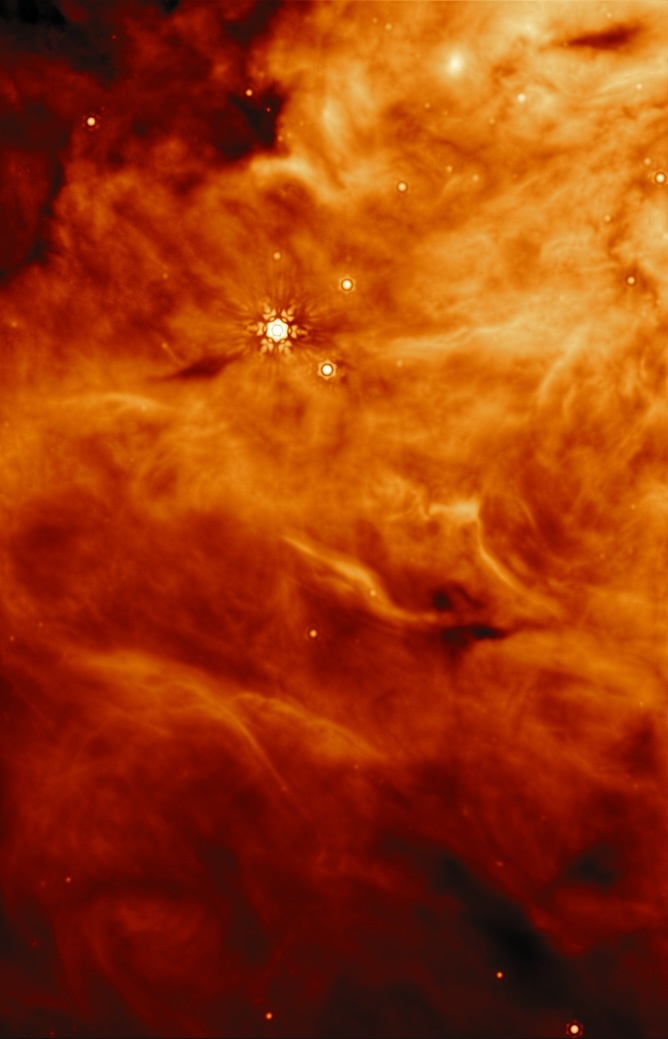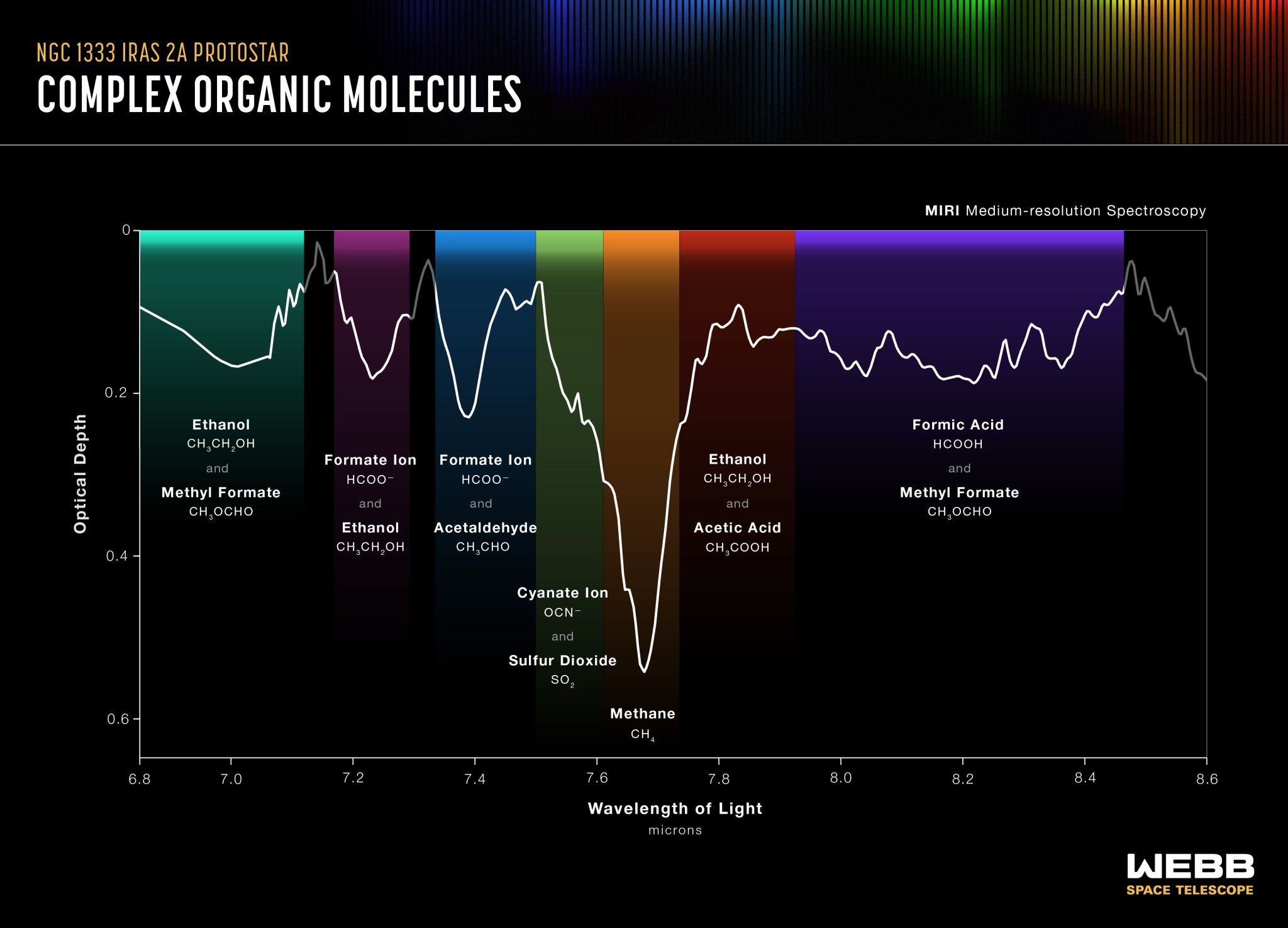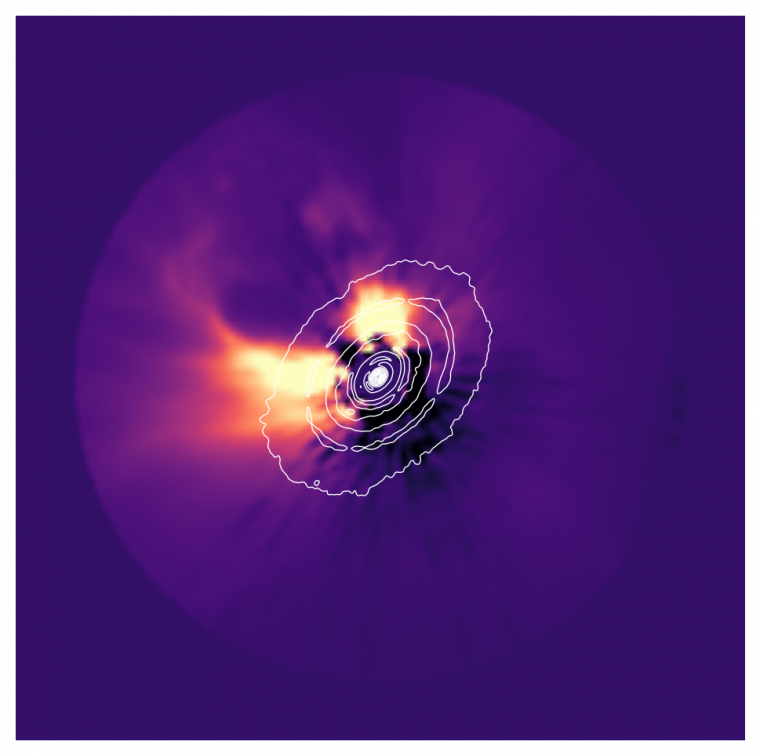When you are trying to solve one of the biggest conundrums in cosmology, you should triple check your homework. The puzzle, called the "Hubble Tension," is that the current rate of the expansion of the universe is faster than what astronomers expect it to be, based on the universe's initial conditions and our present understanding of the universe’s evolution.
13.02.2024
NASA’s Webb, Hubble Telescopes Affirm Universe’s Expansion Rate, Puzzle Persists
Scientists using NASA's Hubble Space Telescope and many other telescopes consistently find a number that does not match predictions based on observations from ESA's (European Space Agency's) Planck mission. Does resolving this discrepancy require new physics? Or is it a result of measurement errors between the two different methods used to determine the rate of expansion of space?
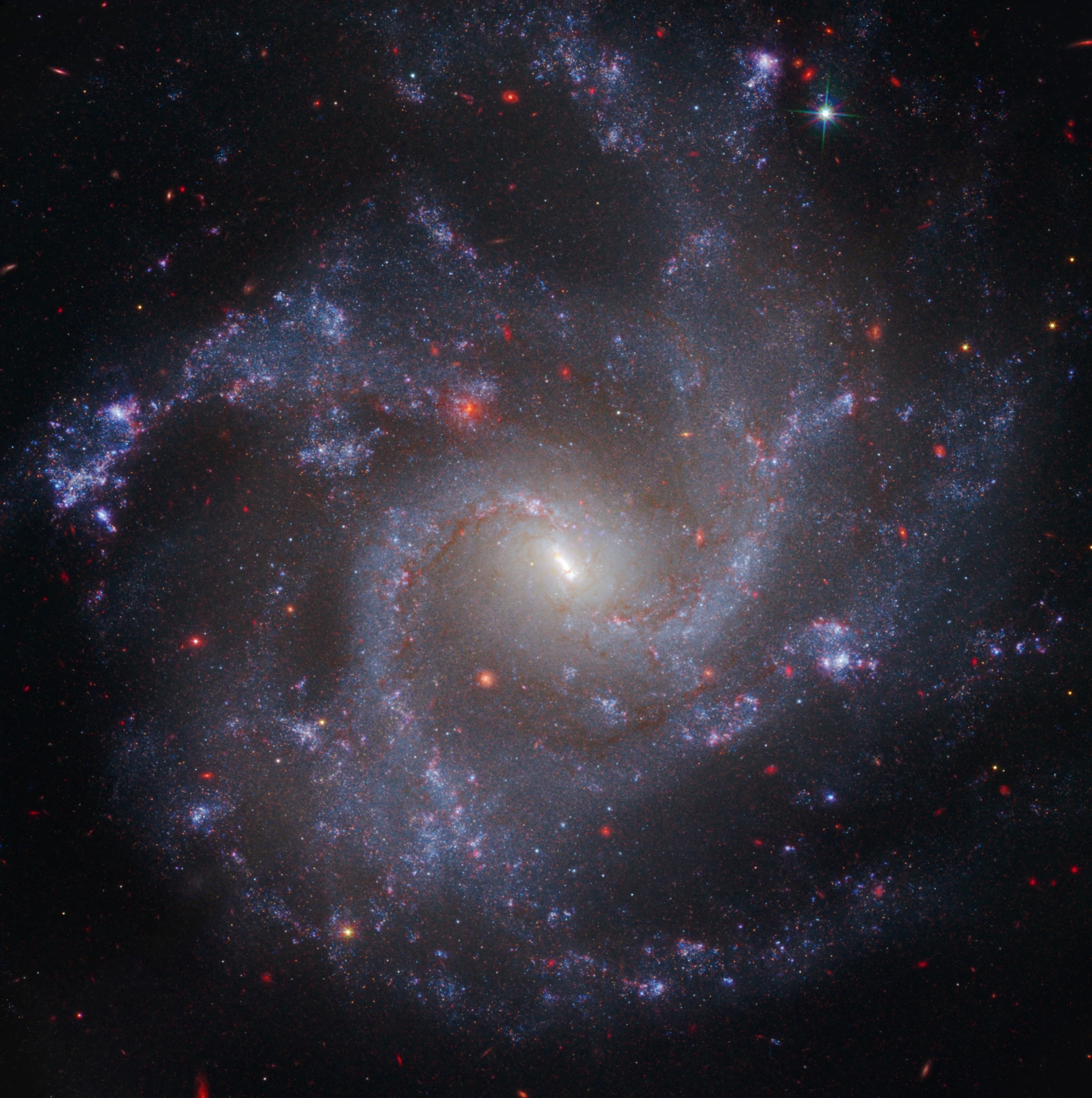
This image of NGC 5468, a galaxy located about 130 million light-years from Earth, combines data from the Hubble and James Webb space telescopes. This is the farthest galaxy in which Hubble has identified Cepheid variable stars. These are important milepost markers for measuring the expansion rate of the universe. The distance calculated from Cepheids has been cross-correlated with a type Ia supernova in the galaxy. Type Ia supernovae are so bright they are used to measure cosmic distances far beyond the range of the Cepheids, extending measurements of the universe's expansion rate deeper into space.
Hubble has been measuring the current rate of the universe’s expansion for 30 years, and astronomers want to eliminate any lingering doubt about its accuracy. Now, Hubble and NASA’s James Webb Space Telescope have tag-teamed to produce definitive measurements, furthering the case that something else – not measurement errors – is influencing the expansion rate.
“With measurement errors negated, what remains is the real and exciting possibility we have misunderstood the universe,” said Adam Riess, a physicist at Johns Hopkins University in Baltimore. Riess holds a Nobel Prize for co-discovering the fact that the universe’s expansion is accelerating, due to a mysterious phenomenon now called “dark energy.”
As a crosscheck, an initial Webb observation in 2023 confirmed that Hubble measurements of the expanding universe were accurate. However, hoping to relieve the Hubble Tension, some scientists speculated that unseen errors in the measurement may grow and become visible as we look deeper into the universe. In particular, stellar crowding could affect brightness measurements of more distant stars in a systematic way.
The SH0ES (Supernova H0 for the Equation of State of Dark Energy) team, led by Riess, obtained additional observations with Webb of objects that are critical cosmic milepost markers, known as Cepheid variable stars, which now can be correlated with the Hubble data.
“We’ve now spanned the whole range of what Hubble observed, and we can rule out a measurement error as the cause of the Hubble Tension with very high confidence,” Riess said.
The team’s first few Webb observations in 2023 were successful in showing Hubble was on the right track in firmly establishing the fidelity of the first rungs of the so-called cosmic distance ladder.
Astronomers use various methods to measure relative distances in the universe, depending upon the object being observed. Collectively these techniques are known as the cosmic distance ladder – each rung or measurement technique relies upon the previous step for calibration.
But some astronomers suggested that, moving outward along the “second rung,” the cosmic distance ladder might get shaky if the Cepheid measurements become less accurate with distance. Such inaccuracies could occur because the light of a Cepheid could blend with that of an adjacent star – an effect that could become more pronounced with distance as stars crowd together and become harder to distinguish from one another.
The observational challenge is that past Hubble images of these more distant Cepheid variables look more huddled and overlapping with neighboring stars at ever farther distances between us and their host galaxies, requiring careful accounting for this effect. Intervening dust further complicates the certainty of the measurements in visible light. Webb slices though the dust and naturally isolates the Cepheids from neighboring stars because its vision is sharper than Hubble’s at infrared wavelengths.
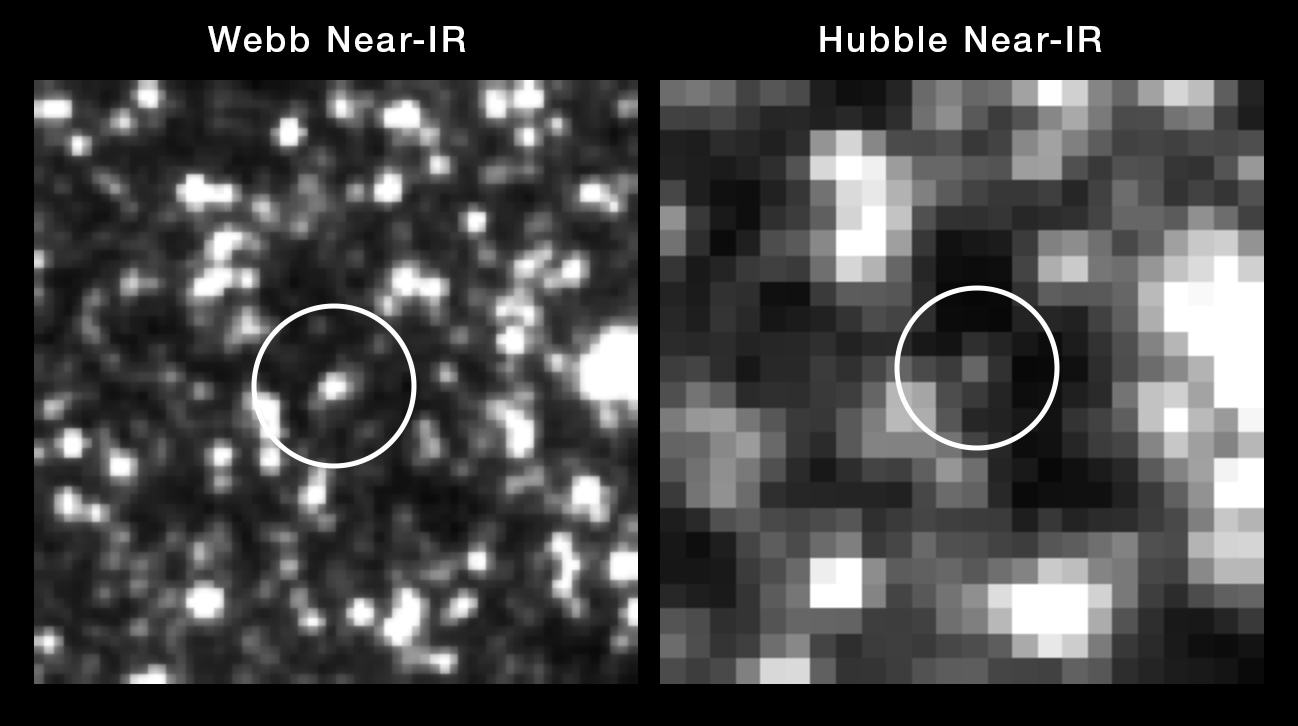
“Combining Webb and Hubble gives us the best of both worlds. We find that the Hubble measurements remain reliable as we climb farther along the cosmic distance ladder,” said Riess.
The new Webb observations include five host galaxies of eight Type Ia supernovae containing a total of 1,000 Cepheids, and reach out to the farthest galaxy where Cepheids have been well measured – NGC 5468 – at a distance of 130 million light-years. “This spans the full range where we made measurements with Hubble. So, we've gone to the end of the second rung of the cosmic distance ladder,” said co-author Gagandeep Anand of the Space Telescope Science Institute in Baltimore, which operates the Webb and Hubble telescopes for NASA.
Hubble and Webb’s further confirmation of the Hubble Tension sets up other observatories to possibly settle the mystery. NASA’s upcoming Nancy Grace Roman Space Telescope will do wide celestial surveys to study the influence of dark energy, the mysterious energy that is causing the expansion of the universe to accelerate. ESA's Euclid observatory, with NASA contributions, is pursuing a similar task.
At present it’s as though the distance ladder observed by Hubble and Webb has firmly set an anchor point on one shoreline of a river, and the afterglow of the big bang observed by Planck’s measurement from the beginning of the universe is set firmly on the other side. How the universe’s expansion was changing in the billions of years between these two endpoints has yet to be directly observed. “We need to find out if we are missing something on how to connect the beginning of the universe and the present day,” said Riess.
These finding were published in the February 6, 2024 issue of The Astrophysical Journal Letters.
The Hubble Space Telescope has been operating for over three decades and continues to make ground-breaking discoveries that shape our fundamental understanding of the universe. Hubble is a project of international cooperation between NASA and ESA. NASA's Goddard Space Flight Center in Greenbelt, Maryland, manages the telescope. Goddard also conducts mission operations with Lockheed Martin Space in Denver, Colorado. The Space Telescope Science Institute (STScI) in Baltimore, Maryland, conducts Hubble and Webb science operations for NASA.
The James Webb Space Telescope is the world's premier space science observatory. Webb is solving mysteries in our solar system, looking beyond to distant worlds around other stars, and probing the mysterious structures and origins of our universe and our place in it. Webb is an international program led by NASA with its partners, ESA (European Space Agency) and the Canadian Space Agency.
Quelle: NASA
----
Update: 14.03.2024
.
JWST reveals a massive and ancient galaxy that challenges our models of the young Universe
Galaxies and stars developed faster after the Big Bang than expected
Detailed pictures of one of the very first galaxies show growth was much faster than we thought
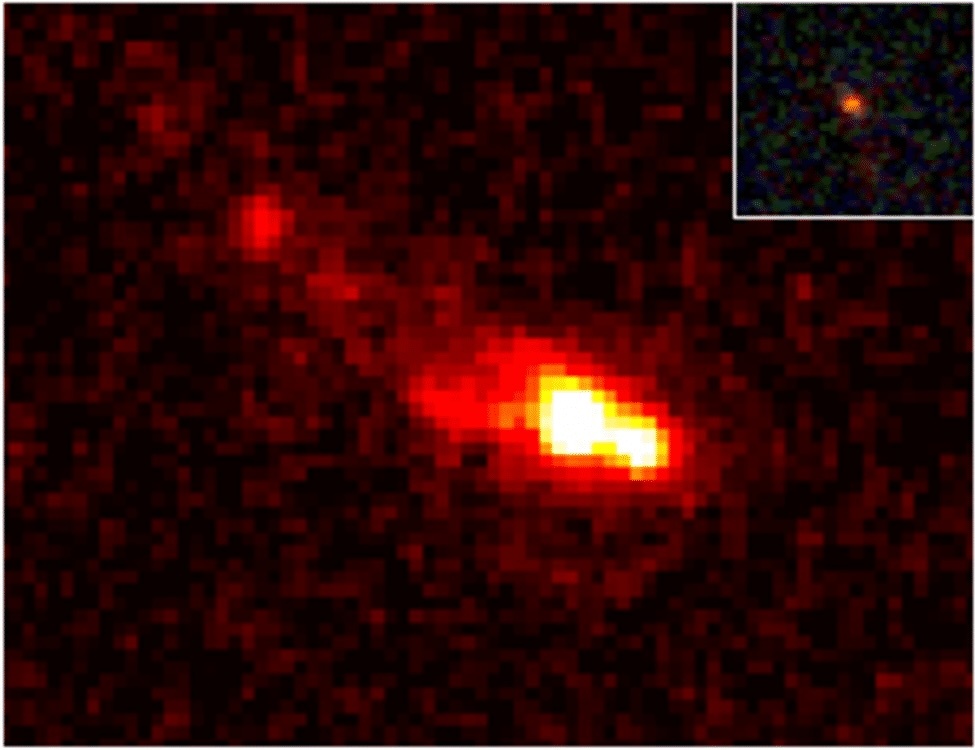
JWST shows details of massive galaxy merger 13 billion years ago (insert of another early galaxy shows how significant the new JWST images are)
An international research team have made unprecedentedly detailed observations of the earliest merger of galaxies ever witnessed. They suggest stars developed much faster and more efficiently than we thought.
They used the James Webb Space Telescope (JWST) to observe the massive object as it was 510 million years after the Big Bang – i.e. around 13 billion years ago.
“When we conducted these observations, this galaxy was ten times more massive than any other galaxy found that early in the Universe,” says Dr Kit Boyett, an ASTRO 3D Research Fellow on First Galaxies, from the University of Melbourne. He is lead author on a paper published today in Nature Astronomy. The paper has 27 authors from 19 institutions in Australia, Thailand, Italy, the USA, Japan, Denmark and China.
JWST, launched in 2021, is enabling astronomers to see the early Universe in ways that were previously impossible. Objects that appeared as single points of light through earlier telescopes such as the Hubble Space Telescope, are revealing their complexity.
“It is amazing to see the power of JWST to provide a detailed view of galaxies at the edge of the observable Universe and therefore back in time” says Prof. Michele Trenti, ASTRO 3D First Galaxies theme leader and University of Melbourne node leader. “This space observatory is transforming our understanding of early galaxy formation” adds Prof. Trenti.
The observations in the current paper show a galaxy consisting of several groups with two components in the main group and a long tail, suggesting an ongoing merger of two galaxies into a larger one. “The merger hasn’t finished yet. We can tell this by the fact we still see two components. The long tail is likely produced by some of the matter being cast aside during the merger. When two things merge, they sort of throw away some of the matter. So, this tells us that there’s a merger and this is the most distant merger ever seen,” says Dr Boyett.
This and other observations using the JWST is causing astrophysicists to adjust their modelling of the early years of the Universe.
“With James Webb we are seeing more objects in the early cosmos than we expect to see, and those objects are more massive than we thought as well,” says Dr Boyett. “Our cosmology isn’t necessarily wrong, but our understanding of how quickly galaxies formed probably is, because they are more massive than we ever believed could be possible.”
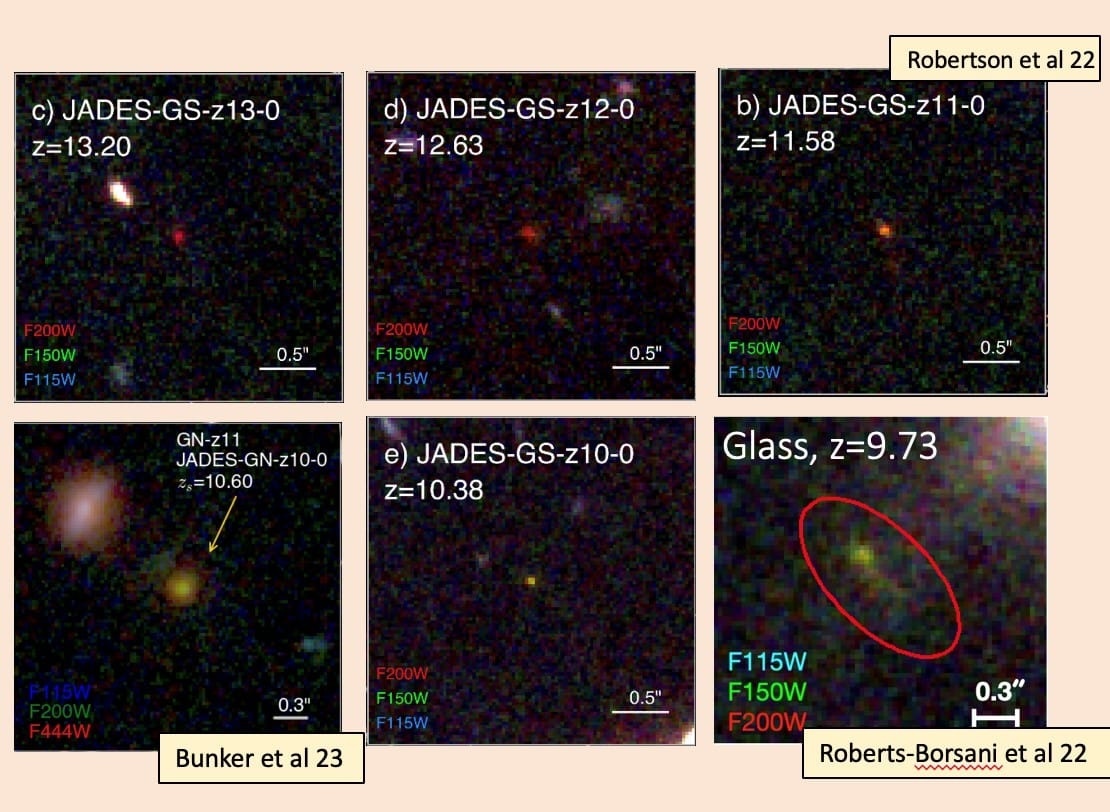
Dr Boyett’s team’s findings show these galaxies were able to accumulate mass so fast by merging.
But it is not only the size of the galaxies and the speed with which they grew that surprises Dr Boyett. His paper for the first time describes the population of stars that make up the merging galaxies – another detail made possible by JWST.
“When we compared our spectrum analysis with our imaging, we found two different things. The image told us the population of stars was young, but the spectroscopy spoke of stars that are quite old. But it turns out both are correct because we don’t have one population of stars but two,” Boyett says.
“The old population has been there for a long time and what we believe happens is the merger of the galaxies produces new stars and that’s what we’re seeing in the imaging – new stars on top of the old population.”
Most studies of these very distant objects show very young stars, but this is because the younger stars are brighter and so their light dominates the imaging data. The JWST, however, allows for such detailed observations the two populations can be distinguished.
“It’s the fact that the spectroscopy is so detailed, we can see the subtle features of the old stars that tell us actually there’s more there than you think,” says Dr Boyett.
“This is not all that surprising, we know that over the history of a universe there are peaks of new star formation for various reasons, and that results in multiple populations.
“But it’s the first time we’ve really seen them at this distance.”
The paper has significant implications for current modelling.
“Our simulations can produce an object similar to the one we observed, roughly at the same age of a universe, and roughly the same mass, however, it’s incredibly rare. So rare there’s only one of these in the whole model. The chance of us observing that with our observations, then suggest we either incredibly lucky or our simulations are wrong, and this sort of object is more common than we think,” says Dr Boyett.
“The thing we think we’re missing is that stars were forming much more efficiently and that may be what we need to change in our models.”
About ASTRO 3D
The ARC Centre of Excellence for All Sky Astrophysics in 3 Dimensions (ASTRO 3D) is a $40m Research Centre of Excellence funded by the Australian Research Council (ARC) and nine collaborating Australian universities – The Australian National University, The University of Sydney, The University of Melbourne, Swinburne University of Technology, The University of Western Australia, Curtin University, Macquarie University, The University of New South Wales, and Monash University.
Quelle: scienceinpublic
----
Update: 15.03.2024
.
Cheers! NASA’s Webb Finds Ethanol, Other Icy Ingredients for Worlds
What do margaritas, vinegar, and ant stings have in common? They contain chemical ingredients that NASA’s James Webb Space Telescope has identified surrounding two young protostars known as IRAS 2A and IRAS 23385. Although planets are not yet forming around those stars, these and other molecules detected there by Webb represent key ingredients for making potentially habitable worlds.
An international team of astronomers used Webb’s MIRI (Mid-Infrared Instrument) to identify a variety of icy compounds made up of complex organic molecules like ethanol (alcohol) and likely acetic acid (an ingredient in vinegar). This work builds on previous Webb detections of diverse ices in a cold, dark molecular cloud.

